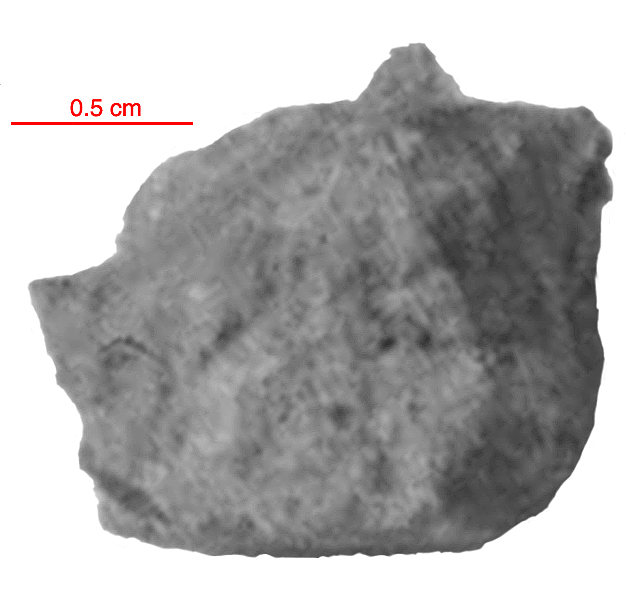
Fact sheet
15356 is a small rake sample. It is a very fine-grained impact melt rock that can be compared with 15357 and 15359. 15356 has been described as an ultrafine subophitic impact melt with mineral clasts. The well-developed micropoikilitic texture consists of pyroxene (pigeonite) oikocrysts enclosing 40% plagioclase laths. Interoikocryst patches contain larger stubby plagioclases and interstices of silicic glass. Armalcolite, rutile and pink-spinel have all been found in this rock, but are not easy to see. Rotation 1 shows the clastic nature of the sample with a rounded olivine crystal and a lamellar twinned plagioclase crystal most obvious. More plagioclase appears in rotation 2, accompanied by a devitrified glass fragment.
The sample weighed 2.0 grams before analysis and has been dated at 3.84 billion years (Ar/Ar).
Further details of this and other Apollo samples are here: http://curator.jsc.nasa.gov/lunar/
The mounting resin of this thin section has deteriorated over time and now contains clusters of colourful dendrites within and around the thin section.
The Apollo 15 landing site was in the Apennine Highlands, and close to Hadley Rille — a long, narrow winding valley. Approximately 76 kg of lunar material, including soil, rock, core-tube and deep-core samples, were returned to Earth.
This mission was the first flight of the Lunar Roving Vehicle which allowed the astronauts to venture further from the Lunar Module than in previous missions. During three periods of extravehicular activity, or EVA, on July 31st, and August 1st and 2nd, Scott and Irwin completed a record 18 hours, 37 minutes of exploration, travelling 17.5 miles, in the first car that humans had ever driven on the Moon.
Apollo 15 was launched on 26 July 1971.






